- Home
- Patrick E. Andrews
Crossed Arrows 3 Page 3
Crossed Arrows 3 Read online
Page 3
By the 1890s those veterans who had survived the war were old men. Their sons and daughters had grown up, married and presented the former San Patricianos with grandchildren. Tomas Orayly, the forty-seven year old son of one of the war survivors, had more or less inherited the legal leadership of the farming community. Over the years he was elected and re-elected alcalde, and his authority was recognized by the state government of Chihuahua. Tomas handled the usual business of administration, settling disputes, issuing marriage and birth certificates, along with other matters concerning the running of the village.
More importantly, he made sure the story of the Saint Patrick Battalion continued to be passed on to each generation of children. He even declared September 13, the date of the executions at Chapultepec, as El Día de los Heroes: Heroes Day.
~*~
It was on a late morning when three men arrived on a train in the Chihuahua town of Vista Montaña. This community, much larger than San Patricio, was located on the Ferrocarril Federal—the Federal Railroad Line—five kilometers east of the Irish-Mexican village.
The trio of passengers consisted of a Mexican Army officer, a financial minister of the government and the minister’s personal servant and bodyguard. The latter individual was short and stocky with a muscular build. His name was Fidel and he was devoted to the minister who had rescued him from the mean streets of Mexico City years before when he was a starving waif.
The purpose of the journey from Mexico City to Vista Montaña was to tend to an important military matter. But their first task was to find out exactly where San Patricio was located since the place was not indicated on any maps. An inquiry of the station manager got them the directions to where the veterans of the Batallón de San Patricio had settled over four decades earlier.
The travelers rented a buggy and horse from the local livery stable for the short trip. As they rolled out of town, the locals gave them a close scrutiny. Two of the trio were obviously members of the upper class. Their clothing was clearly expensive, and both had the looks of importance and authority. The man handling the reins was the servant who was dressed more modestly than the other two. His master’s name was Tim Harrigan, and he was a veteran of the Saint Patrick Battalion and had done quite well as a Mexican citizen.
Señor Harrigan had worked himself from bank clerk to a high position in the financial echelons of the Mexican Republic. His talents and influence eventually earned him a permanent appointment as Ministro sin Carpeta—Minister without Portfolio—from the Mexican government. Tim Harrigan was easily recognized by the letter D branded into his right cheek.
His companion was Colonel Juan-Carlos Valenzuela of the Mexican Army. Harrigan was with the officer to act as a liaison and adviser between him and the people of the community that was their destination that day. The old Irishman glanced appreciatively at the countryside they rode through. “This high country is pleasant, verdad?” he remarked in Spanish.
“Seguro,” Colonel Valenzuela agreed. “And fertile too. Look how tall the corn grows.”
“A lot better than the rocky farms of poor suffering Ireland,” Harrigan stated. “At least that’s what I recall from my youth .”
“I wonder what we’ll find in San Patricio,” Valenzuela mused. “They are two generations past the war. I wonder if they speak Spanish, English or Gaelic.”
“Oh they will speak nothing but Español,” Harrigan acknowledged. “And there is no doubt they write their Irish names according to the Spanish alphabet.”
“Perhaps they know nothing about the war with the Gringos or have no interest in past history.”
The minister smiled. “Since they have Irish blood, señor el coronel, that war will be etched into their hearts.”
A half hour later they turned off the main road and went down a country lane into San Patricio. As they arrived at the small village plaza, Fidel pulled back on the reins, coming a stop. Harrigan nodded to a passing boy leading a burro. “Buenos días, joven. Do you have a mayor in this town?”
“Of course,” the lad answered. He pointed at an adobe building just off the square. “That is his office. His name is Tomas Orayly.”
Harrigan burst out laughing. “O’Reilly, hey? Now there’s a name that’d fit well into the Batallón de San Patricio,”
The boy’s eyes widened, and he spoke up excitedly. “My grandfather was a brave soldier in the San Patricios.” He frowned. “The Gringos hanged him. My grandmother still cries for him and lights candles in church for his soul.”
Harrigan was interested. “What was your grandfather’s name, joven?”
“He called himself Dennis Macoy.”
The colonel looked at Harrigan. “Did you know him?”
Tim laughed again. “There was probably a McCoy in every squad of the San Patricios. But now we know these good people are well aware of the history of the battalion. This will make our job easier.” He nodded to Fidel. “Go to the building the boy pointed to.”
Fidel slapped the reins and drove the horse over to the adobe structure that bore a crudely lettered sign that read Jefatura Municipal—the Mexican equivalent of Town Hall. The colonel and minister got down from the buggy and walked through the door.
A middle-aged man sitting at a battered desk, looked up at their entrance in surprise. “Si, señores?”
The colonel asked, “Are you the alcalde of San Patricio?”
“I am Tomas Orayly at your service, caballeros.”
Valenzuela introduced himself and Harrigan. “I am a colonel in the Mexican Army and my companion here is a government minister who fought in the San Patricios.”
“As did my grandfather,” Tomas informed them. “His name was Maykal Orayly. Perhaps you knew him.”
“I knew a lot of O’Reillys,” Harrigan replied with a smile. “And that includes some Michaels like your grandfather.”
“He was hanged at Chapultepec,” Tomas said. “My father was a baby in my grandmother’s arms when it happened.”
“I was also at Chapultepec,” Harrigan said. “I was one of the prisoners who buried the martyrs in a mass grave.”
Tomas was puzzled. “Why were you not executed?”
“The Americans were not wanton killers. I deserted before the war started, thus they could not convict me of cowardice before the enemy.” He pointed to the D on his cheek. “My punishment was to be branded with this letter that stands for the English word ‘deserter.’”
“That must have been terribly painful,” Tomas said.
“Yes,” Harrigan replied. “But I do not complain. I consider it a badge of honor.”
Tomas was favorably impressed. “Then I respect and admire you a great deal, señor.” He turned to Colonel Valenzuela. “What can I do for you, caballero?”
“I am not going to mince words, Señor Alcalde,” the colonel said. “We are here to recruit soldiers for the Army.” Then he added, “To go to war.”
“I am sorry,” Tomas said. “We have too few young men who are able to leave the village. We must work hard on our farms or we will all starve.”
“Not to worry,” Valenzuela assured him. “This war of which I speak is what the Spanish call a guerrilla—a small war. I can assure you that your village will be well compensated so that there will be no shortage of necessities for the people. In fact, I can guarantee benefits. Nutritious food will be provided along with clothing, medical care and other things that you do not have now. And those of your young men who volunteer will be paid in silver pesos.”
Tomas Orayly was stunned. “I…I cannot imagine such a thing.”
“Then let me explain,” Valenzuela said. “The Estado Mayor of the Mexican Army is planning a war against the United States of America. It will start with quick raids across the Rio Grande.”
“Muy interestante!” Tomas exclaimed.
Tim Harrigan added, “This guerrilla will be the beginning of a war in which Mexico will regain the lands the Gringos stole.” He paused and let the information soak in. “
And it will be a chance for the men of San Patricio to avenge the deaths of their fathers and grandfathers.”
“We are but a few,” Tomas protested. “There are probably only a dozen or so young men who can fight.”
“Those are enough to participate in guerrilla tactics,” Valenzuela explained.
Tomas liked the idea, but he still had misgivings. “None of those young men are soldiers. Or ever have been soldiers.”
“We will train and equip them,” Valenzuela stated. “We will give them weapons and horses. As guerrilleros they will not wear uniforms. It is important that at first the Gringos think they are only bandits and will not send a large force of their soldiers to battle them, eh?”
Tomas Orayly approved of the plan. “That will be venganza dulce—sweet revenge!” I will call a village meeting for this evening and you can address our citizens.”
Five
Ten days after Colonel Juan-Carlos Valenzuela and Minister Tim Harrigan showed up at the village of San Patricio, a detachment of twenty soldiers arrived at the rail depot in Vista Montaña.
This was a cavalry section of the Guardia Nacional that performed ceremonial and security duties for the General Staff of the Mexican Army. They were an impressive unit with dark blue uniforms piped in scarlet on epaulets, collars, pocket flaps and the stripes of their trousers. Their headgear were leather pickelhaube helmets complete with brass Mexican eagles on the front and a metal spikes on top.
They had brought horses and crates of arms and equipment with them. The large load even included wagons to haul this freight to its destination. The officer in charge was Captain Santiago Gomez, who was Colonel Valenzuela’s adjutant.
The townspeople were curious about all the activity, and drifted down to the railroad tracks to see what was going on. But the soldiers forced them away from the depot with shouting and pushing. The people, disturbed and nervous, quickly withdrew. The national soldiery had a reputation for nastiness, thus it wasn’t wise to show defiance against them.
The arrival at the village began with a myriad of chores. Tents were pitched for the Mexican guardsmen; A larger one was erected for Colonel Valenzuela and Minister Harrigan to share. Fidel, the minister’s bodyguard, was quartered with the troops. At first the guardsmen resented his presence, but after he took two of them on and left them sprawled unconscious, the other eighteen thought it best to leave him in peace.
Another tent had been erected to shelter Captain Gomez and the field commander who would arrive later. When that was taken care of, the horses were provided with a corral. Their presence upset the village burros who brayed in protest at what they considered unwanted neighbors.
The next item of business was the issue of food to the population. This was of the highest importance since the present corn crop would not be harvested. The women were worried at first, but the generous amounts of beans, cornmeal, sugar, coffee, flour and live pigs and chickens eased their collective concerns.
Several more deliveries of miscellaneous items showed up over the next couple of weeks. By then the people of Vista Montaña knew enough to stay away from the depot until the freight had been loaded on wagons, and were on the road to San Patricio. The last delivery was accompanied by a mysterious German civilian by the name of Karl Jager. This individual, though not an officer in the Mexican Army, would be the field commander of the operation.
The loads from the trains eventually forced the removal of most of the corn crop that surrounded the village. When it was obvious there would be no backbreaking work of a harvest, Tomas Orayly suggested that people from other villages be allowed to reap the crop. But Colonel Valenzuela nixed the idea, citing the need for secrecy. The officer had already organized roaming patrols of guardsmen to control the outskirts of the community.
The German Karl Jager was a middle-age former warrant officer of the French Foreign Legion. He had spent his entire fifteen-year career in the jungles of Indo-China, fighting where there were no formal lines of battle. Small raids and ambushes in the thick foliage marked the numerous conflicts in that part of the world. Jager had the look of an adventurer with a French-style goatee and a rugged, muscular slimness. He was also fluent in German, French, Spanish and English; skills he had acquired during his career in the Legion where men of many nations served.
When the time was right, he and Captain Gomez, who would be his second-in-command, began the recruiting process to form their small force. Mayor Tomas Orayly summoned the young males who wished to fight the Gringos, to gather outside the town hall. Sixteen showed up and were interviewed by the Mexican Officer and German mercenary. They chose twelve. Mayor Tomas Orayly was proud his son Francisco had been one of them.
Those accepted for the guerrilla warfare were escorted to the rear of the established camp for indoctrination. Since none had been through any sort of military training, neither Jager nor Gomez attempted to form them up properly.
When everyone was assembled, the ex-legionnaire announced, “My name is Jager. I am going to be your comandante. This gentleman beside me is Gomez. He will be the sub-comandante meaning he is my second-in-command.”
The candidates began to appreciate the military aspects of the project they had volunteered for.
Jager continued. “You will be soldiers but the ranks you hold will not be titled soldados. Instead, because of the spirit of our mission, you will be called vengadores. Because that is what you are—avengers—who are going to exact revenge from the Americans who executed your fathers and grandfathers.”
The assembled youths were deeply affected by the revenge aspect. Several called out, “Viva Mexico! Viva la venganza!”
Jager was pleased with their collective fighting spirit. He continued, “You will be the spearhead of a great war in which the Americans will be defeated, thus Mexico will recover all the land they stole from your country. The preparation for this great cause will be hard and demanding, but I am certain you will be up to it.”
Once more the Vengadores shouted their enthusiasm.
“You may return to your homes now,” Jager said. “But tomorrow at dawn you will assemble here to prepare for this great struggle.”
~*~
The training program began with unarmed drill to instill a sense of teamwork and alertness in the young Irish-Mexican farmers. After a week, in which the vengadores exhibited an acceptance of discipline and quick obedience, they were issued their weapons.
Each man received a French Berthier Model 1892 8-milimeter carbine. They also were given another French firearm, which was an 8-millimeter double-action revolver. Jager presented the weapons training in four modes: must know, need to know, should know and nice-to-know. First they learned to load and fire the carbines and revolvers; secondly how to clean and maintain them; thirdly, the nomenclature, characteristics, ranges, muzzle velocities, and other technical information; and lastly the background of the carbine and revolver’s introduction and final acceptance by the French Army.
When it came time for the equitation training, Jager stepped back while Sub-Comandante Santiago Gomez took over. Although the German had served in the Prussian cavalry before joining the Foreign Legion, Colonel Valenzuela preferred to have Gomez teach the vengadores to ride. The colonel believed the captain was more familiar with cavalry tactics needed in the border country. The horses were well fed, healthy broken in and trained.
The schedule of learning to ride horses was typical of any cavalry unit. The steps began with learning the adjustment and fitting of equipment. When those skills were mastered, the training continued with classes on how to stand to horse, to properly mount a horse, dismount, use of the reins, and manage the mounts through walk, trot, and gallop. After that came hours of practice to increase the riders’ skills.
After three weeks, Colonel Valenzuela was shown a demonstration of the men’s abilities. He pronounced them trained well enough to begin training for battle.
With that, Comandante Jager took over once more to teach techniques of attack
, defense, and ambushes. At the end of the training regimen, it was decided the vengadores were ready to be committed to actual combat missions.
The first objective would be Rosario, Texas a small town on the Rio Grande River.
Six
On the same day the Vengadores left to attack Rosario, two strangers on horseback arrived in San Patricio. The locals gave the pair disapproving looks as they rode across the village plaza. They appeared to be nondescript Hispanic drifters common in the border country. Such men were generally troublemakers up to no good. After inquiring of a sentry about the location of Colonel Valenzuela, they went directly to his quarters.
The colonel answered their knock on the front poles of his tent with a wide grin. “Ah, que bueno! Teniente Gonzales and Sargento Sanchez. I’ve been waiting for you.”
The lieutenant and sergeant saluted and were invited in. “We are reporting for duty, mi coronel,” the lieutenant said. “We have been advised by certain officers on the General Staff that you have some special missions for us.”
“Let us sit down,” Valenzuela said. “And we will discuss this most important subject.”
The three settled on the chairs around the colonel’s table. The lieutenant and sergeant both spoke fluent English and Spanish. They operated on the American side of the border performing various clandestine assignments. This was the reason they dressed and acted like ne’er-do-well wanderers. The pair mostly checked out military and commercial activities of the Gringos. Their detailed and accurate reports kept their superiors fully informed of what went on north of the Rio Grande.
Valenzuela fully explained the mission involving the attacks along the international border. When Gonzales and Sanchez heard it was all about preparations for a war against the United States, they were surprised and pleased. The colonel emphasized the motivation of revenge that had been carefully nurtured in the young men in the village. “They are even now on the way to make their first attack. It is a simple assignment, but will give them confidence in their fighting abilities. We have turned them from farm boys into soldiers.”

 Medicine Bundle
Medicine Bundle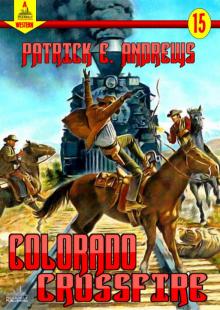 Colorado Crossfire
Colorado Crossfire The Dragoons 3
The Dragoons 3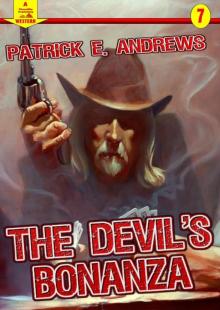 The Devil's Bonanza (A Piccadilly Publishing Western Book
The Devil's Bonanza (A Piccadilly Publishing Western Book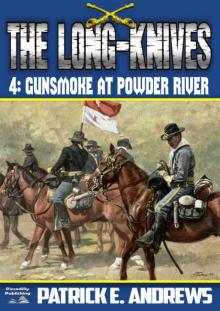 Gunsmoke at Powder River (The Long-Knives #4)
Gunsmoke at Powder River (The Long-Knives #4)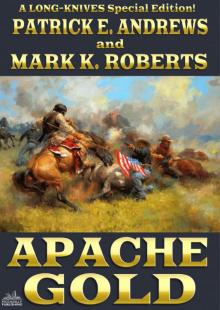 The Long-Knives 6
The Long-Knives 6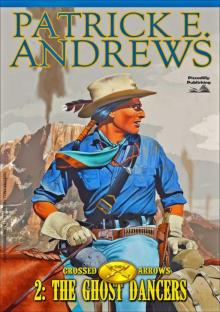 The Ghost Dancers (A Crossed Arrows Western Book 2)
The Ghost Dancers (A Crossed Arrows Western Book 2)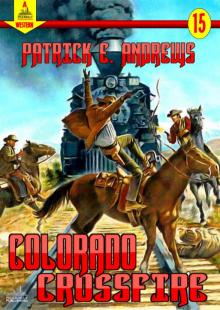 Colorado Crossfire (A Piccadilly Pulishing Western Book 15)
Colorado Crossfire (A Piccadilly Pulishing Western Book 15)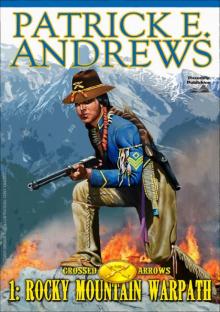 Rocky Mountain Warpath (A Crossed Arrows Western Book 1)
Rocky Mountain Warpath (A Crossed Arrows Western Book 1)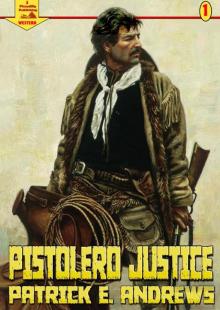 Pistolero Justice (A Piccadilly Publishing Western
Pistolero Justice (A Piccadilly Publishing Western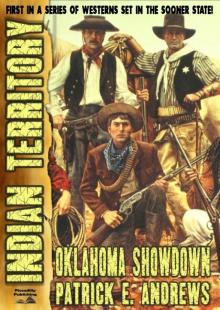 Oklahoma Showdown (An Indian Territory Western Book 1)
Oklahoma Showdown (An Indian Territory Western Book 1)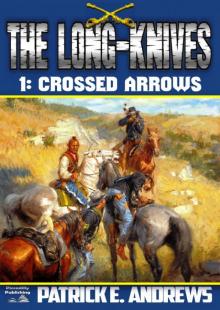 Crossed Arrows (A Long-Knives Western Book 1)
Crossed Arrows (A Long-Knives Western Book 1)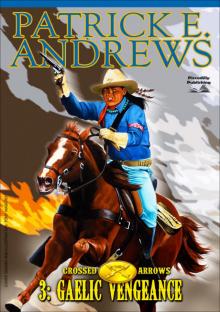 Crossed Arrows 3
Crossed Arrows 3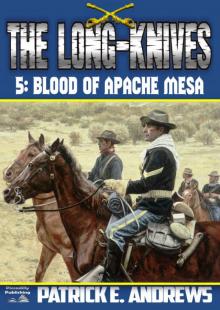 Blood of Apache Mesa
Blood of Apache Mesa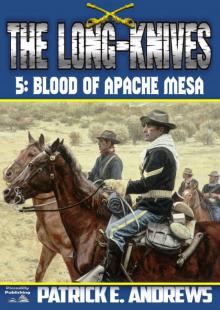 The Long-Knives 5
The Long-Knives 5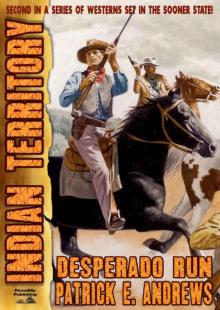 Desperado Run (An Indian Territory Western Book 2)
Desperado Run (An Indian Territory Western Book 2)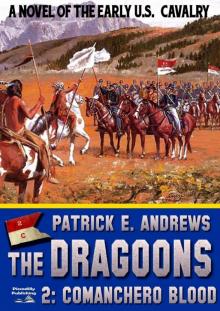 Comanchero Blood (A Dragoons Western Book 2)
Comanchero Blood (A Dragoons Western Book 2)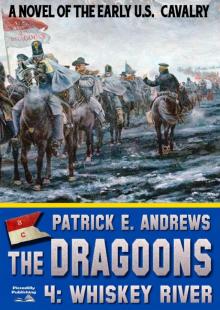 The Dragoons 4
The Dragoons 4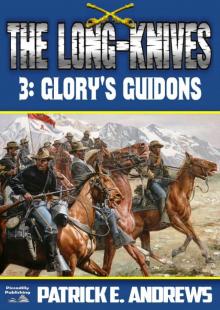 Glory's Guidons (The Long-Knives US Cavalry Western Book 3)
Glory's Guidons (The Long-Knives US Cavalry Western Book 3)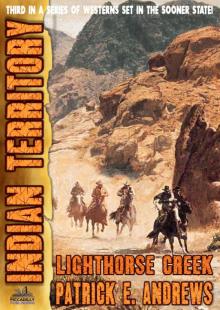 Indian Territory 3
Indian Territory 3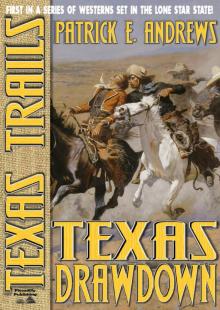 Texas Trails 1
Texas Trails 1